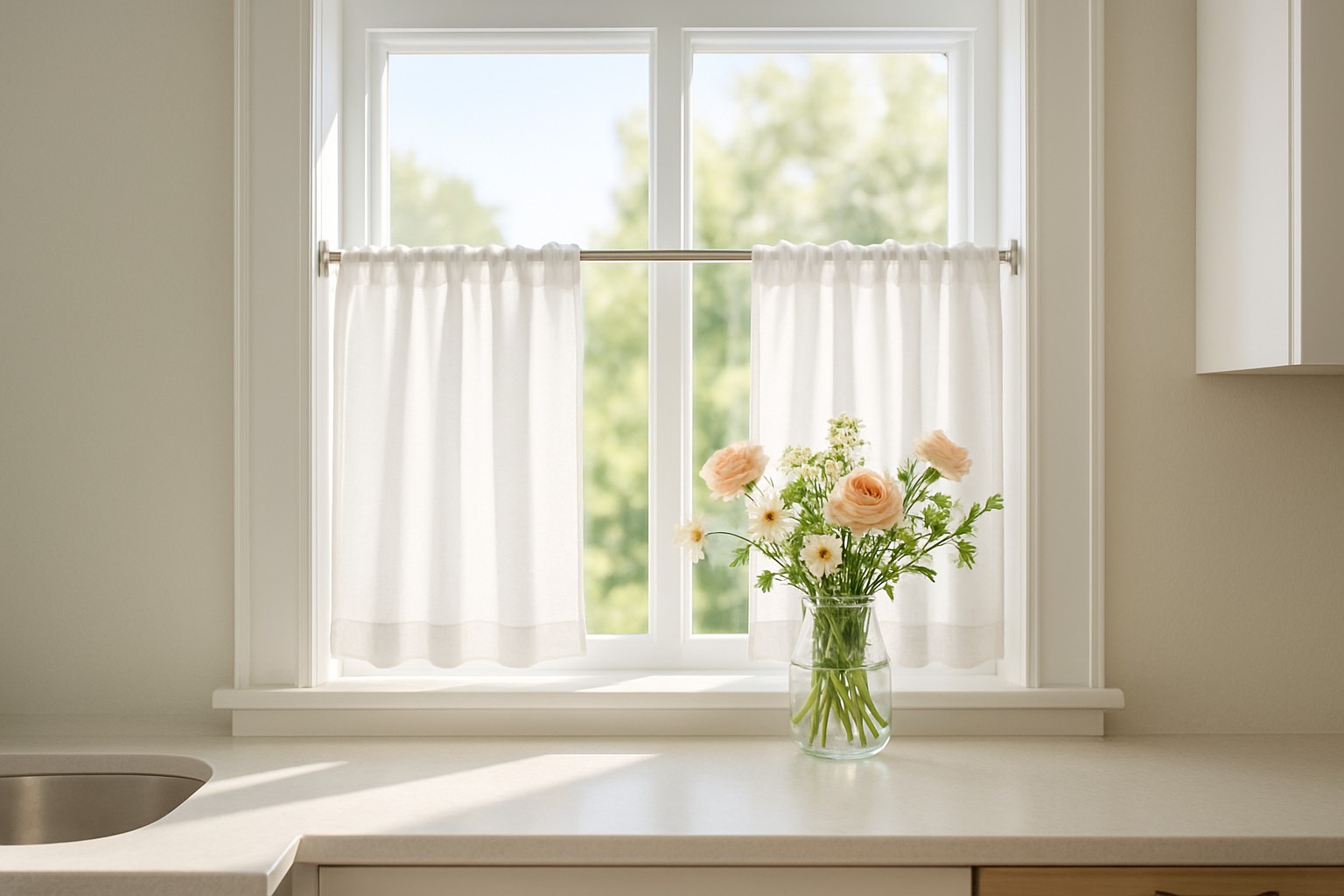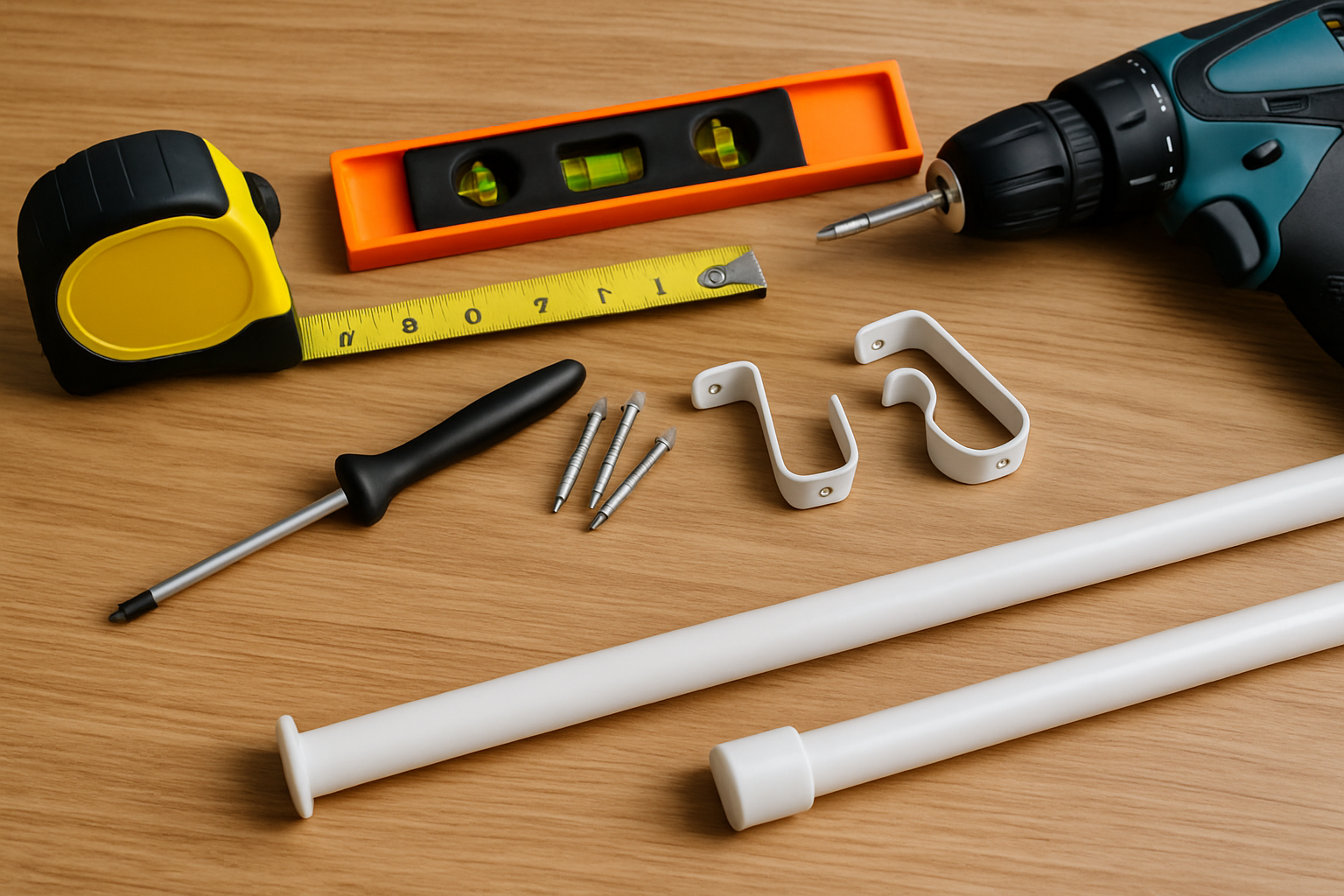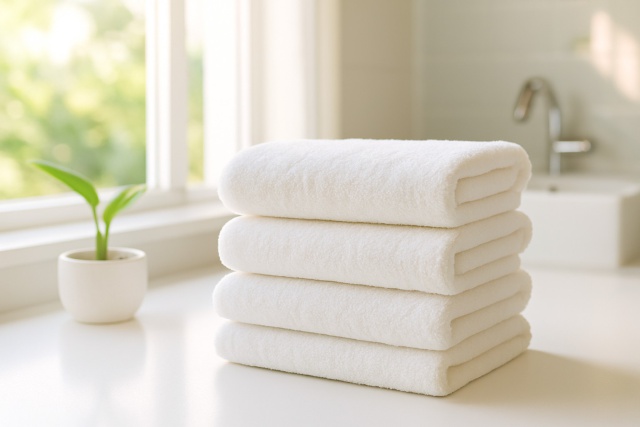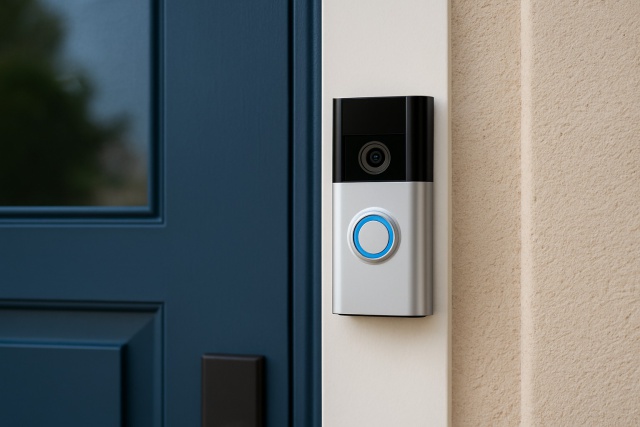Short curtains are a neat and practical choice when full-length drapes feel too heavy or overpowering. They shine by offering privacy and style without hogging the entire window, making them a fantastic pick for kitchens, bathrooms, or cozy little nooks. Hanging short curtains requires extra care with measurements. Even the tiniest slip-up in height or rod placement stands out more because there’s less fabric to hide behind.
Understanding Short Curtains Different Types and When They Work Best Because Let’s Face It, One Size Doesn’t Fit All
Short curtains come in a wide range of styles that fit different tastes and purposes. You might go for cafe curtains that charmingly cover just the lower half of the window or opt for valances that perch neatly along the top edge of the frame. The fabrics and placements vary quite a bit.
- Cafe curtains usually cover the lower half of the window. They strike a nice balance between privacy and letting in natural light. They’re often crafted from cotton or linen which gives them a fresh airy vibe.
- Tier curtains cover the middle section of the window and fit great in kitchens or bathrooms where you want to keep things bright and still maintain privacy. It’s like having your cake and eating it too.
- Valances are charming decorative short curtains that hang at the top of windows. They’re typically made from lightweight fabrics like voile or sheer materials and add a touch of elegance without weighing things down.
- Sill-length curtains reach just to the window sill and work well in casual spaces where you don’t need full coverage. Usually they’re made from easy-care polyester blends which are perfect if you want style without the fuss.
- Short curtains are ideal for smaller or oddly shaped windows where full-length drapes could feel over the top.
- Fabric choices cover the spectrum from sheer to blockout so you can tailor your curtains to how much light control and privacy you want.
- These styles bring a cozy tailored look to your space without the heavy feel of full-length curtains. That’s why they’re often a go-to for apartments and smaller rooms where every inch counts.
Essential Tools and Materials You’ll Need for Hanging Short Curtains
To hang short curtains like a pro the first step is rounding up the right tools and materials. Having the proper gear makes all the difference in getting them up steady and level so you avoid that lopsided look that screams "I gave up halfway." You’ll want hardware made for lighter fabrics, measuring tools that give you spot-on numbers, and the right equipment to mount rods without leaving battle scars on your walls or window frames.
- Adjustable curtain rods crafted especially for shorter lengths so you can nail that perfect fit for your window width without guesswork.
- Sturdy mounting brackets built to hold the rod firmly in place and designed with your wall type in mind—no sagging or wobbling here.
- Screws and anchors chosen depending on whether you’re dealing with drywall, plaster or masonry to make sure everything stays put.
- Measuring tape marked in both centimeters and inches. This one’s got you covered.
- A trusty pencil for marking bracket spots—easy to erase and won’t leave permanent marks.
- Drill equipped with the right bits to create anchor holes that match your specific wall type and keep things neat and secure.
- Screwdriver to fasten the mounting brackets tight so you won’t be redoing this anytime soon.
- Level tool to make certain the rod is perfectly straight because uneven curtains are a pet peeve of mine.
- Optional curtain rings or clips to suit whatever kind of curtain header you’ve got, offering a bit of customization without the fuss.
A Down-to-Earth Guide to Hanging Short Curtains, Step by Step
Here are some straightforward steps to help you measure your windows just right and install your curtain rod exactly where it should go. You will also learn how to hang your short curtains so they align neatly
- Start by measuring the width of your window frame from one edge to the other. Then add 2 to 4 inches on each side so the rod extends beyond the frame—this simple trick helps the curtains fully cover the glass without awkward gaps.
- Next, measure the height from the top of the window frame down to where you would like the curtains to hang. This could be just below the sill or at it if you want a neat shorter look.
- Choose a curtain rod length that matches or is slightly longer than your total width measurement. It is better to have a little extra space than be too tight.
- Use a pencil to mark where the brackets will go on the wall. Double-check that the marks are level and evenly spaced on both sides because crooked brackets don’t look good.
- Drill pilot holes using the right screwdriver bits and insert drywall anchors if you need extra support.
- Screw the mounting brackets on firmly. Use a level to make sure they sit perfectly straight. This step might seem tedious but it’s worth it.
- Finally, slide your short curtains onto the rod or clip on your rings then place the rod onto the brackets. Adjust the folds and tiebacks until you achieve the look and fullness that feel just right.
When measuring for short curtains, even a tiny slip-up in height can make them look either comically too long or awkwardly too short. It’s worth taking a moment to double-check your measurements and mark every single spot with care before you start drilling away.
Common Mistakes People Often Make When Hanging Short Curtains (and How to Avoid Looking Like a Rookie)
Hanging short curtains might seem like a piece of cake but believe me new DIYers often stumble upon some familiar hiccups. Little slip-ups like measuring off by an inch or putting the rod in the wrong spot can throw off not just the curtains’ look but also how they actually work. This ends up messing with the whole room’s vibe.
- Measuring curtains either too long or a bit too short often leads to awkward gaps or bunching of fabric above or below the window sill.
- Installing the curtain rod too high makes short curtains look out of proportion. Setting it too low limits the light and makes the space feel cramped.
- Pairing heavy curtain rods with lightweight curtains usually causes sagging or curtains that don’t drape right.
- Overlooking the fullness of the curtains leaves you with a flat and less welcoming vibe.
- Forgetting to consider the window frame’s unique shape and architectural quirks affects how curtains fit.
- Forgetting to level the rod and brackets causes curtains to hang unevenly and messes up the visual balance.
- Not planning for fabric shrinking or stretching after washing can change your curtain length unexpectedly.
"Taking a little extra time to measure carefully and think through exactly where your curtains will hang can save you from a whole lot of headaches later on. Trust me, it makes all the difference in ensuring your short curtains not only look sharp but also fit just right in your space."
Tips for Styling Short Curtains that Bring a Room to Life
Picking the right fabric and styling details can effortlessly elevate short curtains from merely practical to a standout design feature. Pairing short curtains with blinds or shades usually amps up privacy control, while tiebacks add a handy touch of flexibility.
- Choose sheer fabrics to softly filter sunlight while keeping your privacy intact, or opt for opaque ones in darker rooms to give your insulation a little extra muscle.
- Add tiebacks or clips to easily sweep curtains aside, giving you more control with a neat and stylish flair.
- Match curtain colors and patterns to your room’s accent tones to whip up a cohesive vibe that really highlights your design details.
- Layer short curtains over blinds or shades to juggle style and smarter light control without breaking a sweat.
- Experiment with textures like lace or embroidered fabrics for a delicate touch of elegance that won’t overpower smaller windows because sometimes less is definitely more.






